Questionin my grandmas back yard in florida i caught a green anole. i would like to keep it and i have some qestions. i have been looking on the internet and havent found much information.one site says they eat bugs. what kinds of bugs do they eat? is there bugs that could harm or possably kill them? how do you tell what gender it is? i dont know how old it is but its about 3-4 inches long. i suspect a year or so possibly 2. it has a doolap so it might be a male. what kind of cage do i need ad do i need a heat lamp? i dont know if you need to know this but im only visiting. i live in centril missouri. thank you for taking time to read and anserw me.
yours,
Maisey
AnswerHi, Maisey,
The first thing to keep in mind is that, like the 'free puppy', there's no such thing as a free reptile.
The basic caging and equipment for a diurnal (awake during the day) lizard is going to run around $120. It doesn't matter if the lizard is a wild-caught green anole, or a $200 day gecko, the cost for housing it is the same.
Lizards of this type require the following:
An enclosure of appropriate size to give them room to move around, and keep their stress level down. For a single green anole, I would recommend a 12 X 18 Exo Terra or ZooMed vivarium as the minimum. A 10 gallon tank with mesh top can be used, but isn't ideal and will make maintenance much harder.
A UVB light. Use a full-length fluorescent tube designed specially for reptiles, that produces UVB light. The compact fluorescent type have been implicated in causing eye damage. UVB is necessary for diurnal lizards because they do not absorb vitamin D efficiently from supplements. Vitamin D is produced in the skin when it is exposed to UVB light. (UVA does not have this effect--the light bulb must be fluorescent or mercury-vapor, not incandescent...but the mercury vapor lights get too hot for such a small cage).
A heat source. You can use a heat pad (stick it to the back of the cage, not the bottom), a radiant heat panel, or an overhead heat light. Heat sources other than lamps should be controlled by a thermostat or rheostat (never just plug them in). Heat lamps can be controlled by using different wattage bulbs, and raising or lowering the light over the cage.
Thermometers. Use at least 2, with remote probes (not the pet store stick-on kind). You can pick up inexpensive indoor/outdoor digital thermometers with remote probes at WalMart.
Plants, live or fake. Anoles need plenty of cover and climbing areas to feel secure.
You can use cage carpet, newspaper, paper towel, or coconut fiber bedding on the cage floor...there are plenty of options. Don't use sand, cob, pine, or cedar.
Temperature in the cage during the day should be 80F with 60% humidity (use a fogger, or spray water, to keep the humidity up. Anoles will drink water droplets from the spray, and usually will not drink from a dish. Use distilled water to avoid spots on the glass).
There should be a 90F basking spot available on a perch. (Use a thermometer to make sure the basking area is not too hot or cool).
Green anoles eat insects. To avoid the risks of introducing parasites (though your wild caught anole probably already has them), and to avoid the risk of poisoning from pesticides, don't fee wild insects. Pet stores sell crickets in a range of sizes. Adult anoles eat crickets up to 1/4" (no larger). You can also feed them 'phoenix worms'. Dust crickets with a quality calcium powder supplement, because crickets are too high in phosphorus.
Green anoles will also benefit greatly from day gecko nectar or crested gecko diet formula, served in an elevated cup.
The full lifespan of a Green Anole ranges from 5 to 8 years, though wild caught individuals may not live quite as long. As with any pet, a yearly vet check is recommended. For one thing, a vet can treat your lizard for its internal parasites. These can build to lethal levels in a captive situation (cleanliness is important). Eliminating these will greatly extend your lizard's life.

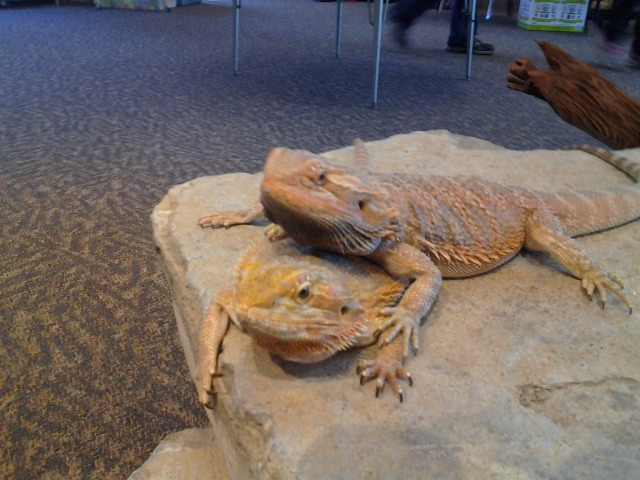 bearded dragon breeding
Question
Delylah and Spike
I have a 4 year old f
bearded dragon breeding
Question
Delylah and Spike
I have a 4 year old f
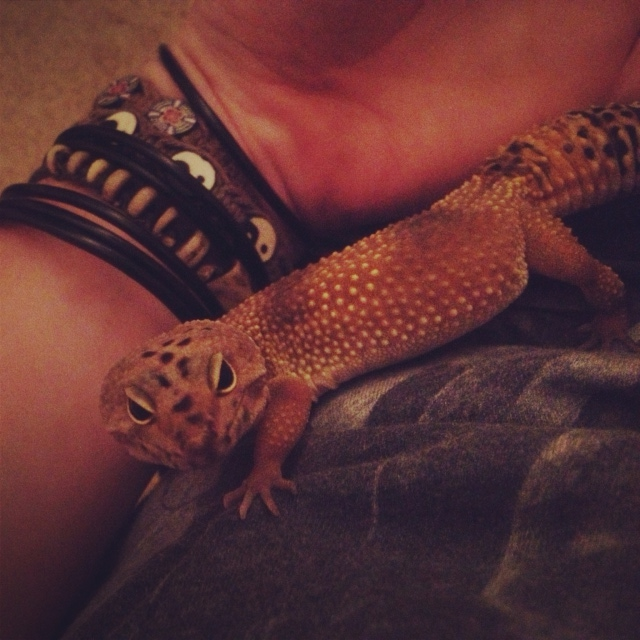 Leopard geckos handling
QuestionQUESTION: Hi,
2 weeks ago I purchased my first
Leopard geckos handling
QuestionQUESTION: Hi,
2 weeks ago I purchased my first
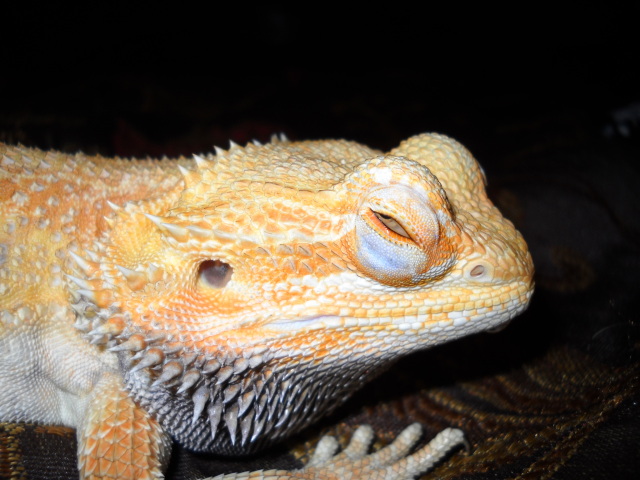 Bearded Dragon Swollen Eyes
QuestionBow
QUESTION: Hi Tracie,
I have a bearde
Bearded Dragon Swollen Eyes
QuestionBow
QUESTION: Hi Tracie,
I have a bearde
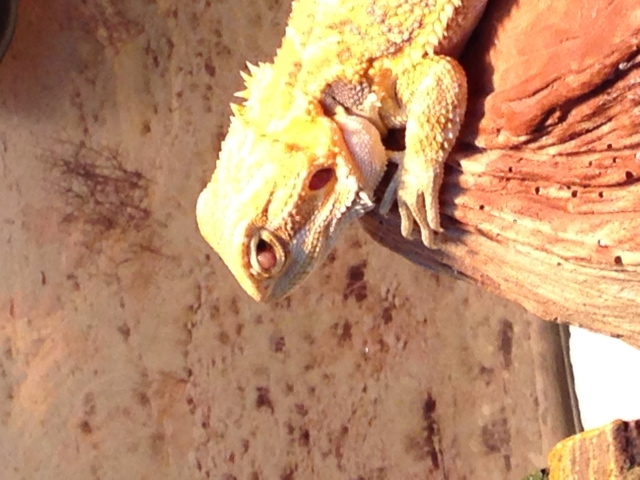 Bearded dragon eye problem
QuestionEye
QUESTION: Hi Mick,
I was researchin
Bearded dragon eye problem
QuestionEye
QUESTION: Hi Mick,
I was researchin
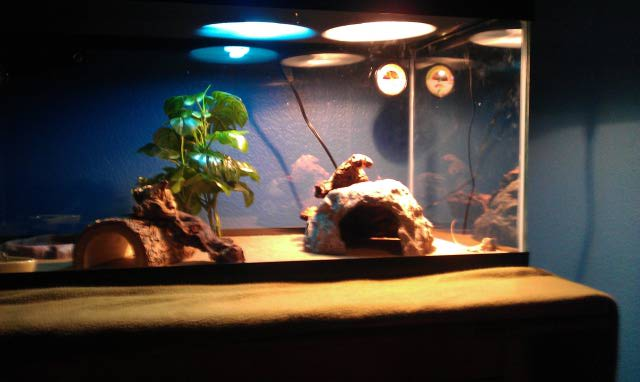 Bearded Dragon 2
QuestionHis Cage
Him
QUESTION: I just got
Bearded Dragon 2
QuestionHis Cage
Him
QUESTION: I just got